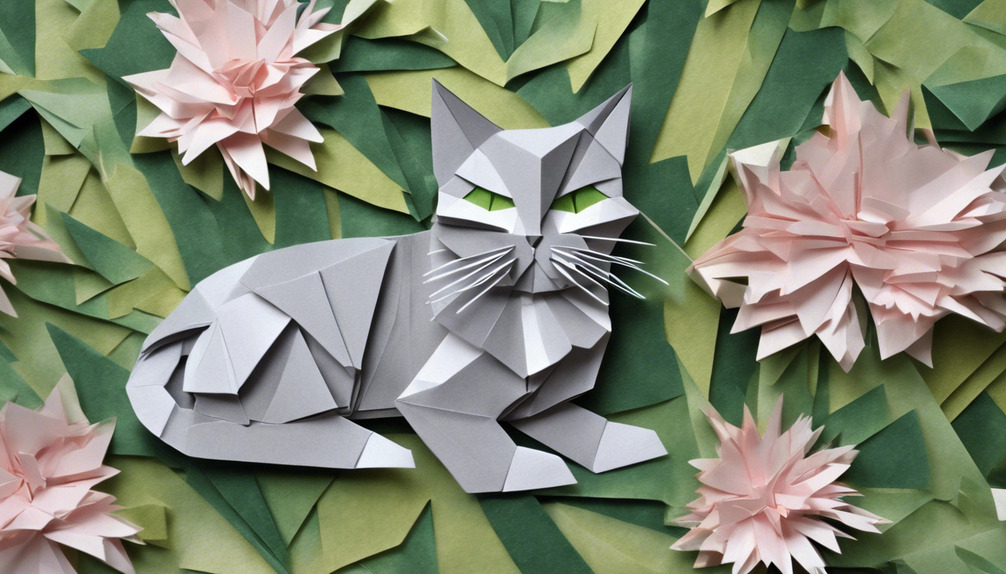If you didn’t already know, glaucoma affects around 2% of the feline population, and senior cats are particularly prone to developing this condition. It can be a distressing experience to witness your beloved ct struggle with the discomfort and potential loss of vision that comes with glaucoma.
But fear not, because there are practical steps you can take to help manage this condition and ensure your senior cat’s quality of life. From understanding the signs to seeking veterinary care and implementing treatment, there are five essential tips that can make a world of difference for your cat.
So, let’s explore how you can support your senior cat through this challenging time.
Key Takeaways
- Early detection and intervention are crucial for preserving vision in senior cats with glaucoma.
- Prompt veterinary attention is necessary for early detection and management of glaucoma in senior cats.
- Regular monitoring of intraocular pressure and proper administration of medication are important for managing glaucoma in senior cats.
- Providing a comfortable and safe environment, along with supportive care, can enhance the well-being of senior cats with glaucoma.
Understanding Glaucoma in Senior Cats
Understanding glaucoma in your senior cat is crucial for providing the best care and support for your cat’s eye health. Glaucoma in senior cats, can be a concerning condition, as it involves increased pressure within the eye. This heightened pressure can lead to symptoms such as eye pain, watery discharge, swelling and bulging of the eyeball, cloudy cornea, dilated pupils, and even blindness.
It’s essential to recognize these signs early and seek veterinary care promptly. High intraocular pressure can cause severe damage to the retina and optic nerve, potentially resulting in vision loss. Therefore, understanding the signs and symptoms of glaucoma is vital for early detection and intervention.
Your veterinarian can diagnose glaucoma by measuring the intraocular pressure and will recommend treatment to reduce the pressure and manage the underlying cause. With the right veterinary care and treatment, it’s possible to alleviate your senior cat’s discomfort and preserve their precious eyesight.
Being proactive and informed about glaucoma will enable you to provide the necessary support and care for your beloved senior cat.
Recognizing Symptoms of Glaucoma in Senior Cats
If your senior cat is exhibiting any of the signs of glaucoma, such as eye pain, watery discharge, or swelling, it’s crucial to seek immediate veterinary attention to ensure their well-being and preserve their precious eyesight.
Recognizing symptoms of glaucoma in senior cats is essential for their overall health and quality of life. Watch for subtle changes in behavior, such as hiding, unresponsiveness, or depression, as these could indicate underlying eye pain. Keep a close eye on their eyes for any signs of cloudiness, dilated pupils, or even partial or complete blindness. Any of these symptoms could be a sign of increased eye pressure, indicating a potential glaucoma diagnosis.
It’s important to be vigilant and seek prompt veterinary care if you notice any of these symptoms. Early detection and management can help alleviate discomfort, prevent further vision loss, and provide pain relief for your beloved cat. Remember, your senior cat may not be able to vocalize their discomfort, so it’s crucial to pay attention to any signs of illness and provide the necessary care they deserve.
Seeking Veterinary Care for Glaucoma in Senior Cats
If your senior cat is displaying any symptoms of glaucoma, ensuring prompt veterinary care becomes essential to address their eye health and overall well-being.
Senior cats are more susceptible to eye conditions, and glaucoma can progress rapidly, causing discomfort and vision impairment. Seeking veterinary care is crucial to diagnose glaucoma and begin appropriate treatment to relieve the pain and reduce intraocular pressure.
When you notice signs of glaucoma such as enlarged pupils, cloudy corneas, or redness in the eyes, don’t hesitate to schedule a visit to the veterinary hospital. Your veterinarian will conduct a thorough eye examination, measuring the intraocular pressure and assessing the extent of the condition.
Depending on the diagnosis, your veterinarian may recommend medications to reduce intraocular pressure or even refer you to a veterinary ophthalmologist for specialized care.
Implementing Treatment for Glaucoma in Senior Cats
When addressing the treatment for glaucoma in senior cats, regularly monitoring intraocular pressure using tonometry is crucial to assess the effectiveness of the prescribed medications and manage the associated pain.
By diligently administering the prescribed eye drops to reduce high eye pressure, you can help minimize the risk of irreversible blindness in your senior cat. It’s important to consult a veterinary ophthalmologist to develop a tailored treatment plan that addresses the underlying cause of increased intraocular pressure. In some cases, surgical intervention might be necessary if medical treatment alone is insufficient to control the condition.
To provide a clearer picture, here’s a table outlining the key aspects of implementing treatment for glaucoma in senior cats:
| Aspects of Treatment | Description |
|---|---|
| Medication | Administer prescribed eye drops as directed by the veterinarian. |
| Monitoring | Regular tonometry to assess the effectiveness of treatment. |
| Veterinary Care | Consult a veterinary ophthalmologist for specialized treatment and guidance. |
| Surgical Intervention | Consider surgery if medical treatment fails to adequately control intraocular pressure. |
| Follow-up Appointments | Ensure regular visits to monitor the progression of glaucoma and adjust treatment as needed. |
Implementing these measures can significantly improve the quality of life for your senior cat and alleviate their discomfort.
Providing Supportive Care for Senior Cats With Glaucoma
As you continue to care for your senior cat with glaucoma, it’s essential to provide supportive measures that complement the treatment plan and enhance their comfort and well-being. Your cat may experience pain and discomfort due to increased pressure in the eye caused by glaucoma.
To help manage this condition and support your senior cat, consider the following:
- Monitor behavior and signs of discomfort diligently, as senior cats may not show obvious signs of pain. Look for changes in their activity level, appetite, and interactions with their environment.
- Ensure regular veterinary check-ups to monitor eye pressure and assess the progression of glaucoma. This will help in adjusting the treatment plan and managing any underlying causes effectively.
- Make your senior cat’s living area easy and safe to move around in, especially if they might be losing their vision. Keep the area clear of obstacles and consistent to prevent accidents.
Frequently Asked Questions
How Can I Help My Cat With Glaucoma?
You can help your cat with glaucoma by administering prescribed pain relief and eye medications. Watch for symptoms like eye pain, watery discharge, or behavioral changes, and seek immediate veterinary care if needed.
How Do I Know if My Cat Is in Pain From Glaucoma?
You’ll notice signs like watery discharge, cloudiness, dilated pupils, and behavioral changes. Look for reduced grooming, squinting, red or hazy eyes, sudden aggression, or increased sleep. Seek veterinary attention for any sudden loss of vision or asymmetrical eye size.
What Is the Best Thing You Can Do to Stop Glaucoma From Getting Worse?
The best thing you can do to stop glaucoma from getting worse is to consistently follow your vet’s treatment plan. Administer medications, maintain a stress-free environment, and seek prompt care to protect your senior cat’s eyesight.
How Can I Slow the Progression of Glaucoma?
You can slow the progression of glaucoma by consistently giving prescribed medications, following vet check-up recommendations, and watching for any changes in your cat’s behavior or symptoms. Promptly address any signs of pain or vision loss.




